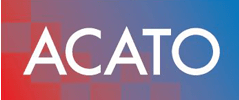What You Should Know About ISO 27001 Risk Assessment Process

ISO 27001 Risk Assessment Process Explained
Every organization faces information security risks, yet many leaders underestimate the importance of a structured risk assessment. The ISO 27001 Risk Assessment process provides a clear framework to identify, evaluate, and manage these risks effectively. This article will explain the fundamentals of the risk assessment, outline the critical steps involved, and discuss the role of risk treatment in achieving compliance. By understanding this process, readers will learn how to enhance their organization‘s security posture and address potential vulnerabilities, ultimately protecting valuable assets and meeting client expectations.
Essential Key Takeaways for Implementing ISO 27001 Risk Assessments
- iso 27001 provides a systematic framework for managing sensitive information and assessing risks
- Organizations must identify their risk appetite to prioritize mitigation strategies effectively
- Regular audits and external assessments help ensure compliance and improve security measures
- Ongoing risk assessments support adapting to new threats and maintaining an effective security posture
- Resource allocation and clear role definition are essential for successful risk management efforts
Understand the ISO 27001 Risk Assessment Fundamentals

Information Security Management, as defined by ISO 27001, encompasses systematic practices for managing sensitive company information. Key components of risk assessment include identifying vulnerabilities and assessing the probability of threats, such as phishing attacks. Understanding the significance of risk management ensures organizations effectively mitigate potential security risks, reinforcing their overall security posture in compliance with international standards set by the International Electrotechnical Commission.
Define Information Security Management According to ISO 27001
Information security management according to ISO 27001 focuses on establishing a systematic framework for protecting sensitive information within an organization. This framework includes a comprehensive checklist to assess risks associated with human resources, data handling, and database security, thereby ensuring organizations remain compliant with established best practices. By implementing these structured risk assessment procedures, businesses can effectively identify vulnerabilities and mitigate potential threats to their information assets.
- Establish a systematic framework for information security management.
- Utilize a checklist for risk assessment including human resources and database security.
- Identify vulnerabilities and mitigate potential threats.
Identify Key Components of Risk Assessment in ISO 27001
Key components of risk assessment in ISO 27001 include identifying an organization’s risk appetite, which determines the level of risk that can be tolerated without undue impact on operations. The process also involves creating an inventory of information assets, allowing organizations to prioritize their mitigation strategies based on these assets’ significance. Engaging an external auditor can provide valuable insights into the risk assessment process, ensuring that the developed strategies align with industry standards and effectively address potential vulnerabilities.
- Assess risk appetite to define acceptable levels of risk.
- Create an inventory of information assets for prioritization.
- Develop mitigation strategies based on asset significance.
- Collaborate with an external auditor for compliance and improvement.
Discuss the Importance of Risk Management in Organizational Security
Risk management is a crucial aspect of organizational security, particularly when guided by a robust risk management framework. It allows organizations to protect their most valuable assets, including proprietary documents and sensitive information. By implementing effective risk management strategies, businesses can enhance their security posture, respond to evolving threats with greater intelligence, and ensure compliance with standards like ISO 27001, ultimately safeguarding their operations and reputation.
Understanding the fundamentals of ISO 27001 risk assessment lays the groundwork for effective information security. Now, it’s time to recognize the steps in the ISO 27001 risk assessment process that will guide you in protecting your organization‘s vital data.
Recognize the Steps in the ISO 27001 Risk Assessment Process

Preparation for an effective risk assessment in ISO 27001 begins with outlining critical requirements, including defining the scope of the assessment and understanding the organization‘s risk appetite. The next step focuses on the asset identification process, where businesses catalog their valuable information assets. Finally, various risk analysis methods, such as assessing the effectiveness of antivirus software and automation solutions, determine the potential impact on the organization’s information security framework.
Outline the Preparation Requirements for an Effective Risk Assessment
Preparing for an effective ISO 27001 risk assessment requires clarity in ownership of information assets, as this ensures accountability in risk management practices. Additionally, organizations must assess the handling of personal data to understand vulnerabilities and compliance obligations that may influence certification costs. Establishing a robust system for cataloging assets and defining risk assessment parameters supports the overall security framework, enabling organizations to address potential threats more effectively.
Detail the Asset Identification Process in Risk Assessment
The asset identification process in ISO 27001 is essential for safeguarding the integrity and reputation of an organization. This phase involves cataloging information assets, which can include anything from proprietary software to sensitive client data protected by cryptography. Properly identifying these assets informs policy development and risk assessment decisions, ensuring that all valuable resources are adequately protected against potential threats.
Explain the Risk Analysis Methods Used in ISO 27001
ISO 27001 employs various risk analysis methods to assess potential threats and vulnerabilities within an organization’s data securitylandscape. Among these methodologies, qualitative and quantitative assessments stand out; qualitative methods evaluate risks based on subjective criteria, such as expert judgment, while quantitative approaches utilize measurable data, providing a numerical basis for risk impact and likelihood. For instance, an organization might assess the effectiveness of its firewall against cyber threats like malware while also analyzing mobile device usage to recognize potential vulnerabilities related to remote access.
- Identify methodologies, including qualitative and quantitative assessments.
- Evaluate the effectiveness of security measures like firewalls.
- Analyze mobile device risks to enhance data security.
The risk assessment has laid the groundwork for a solid defense. Now, it is time to examine how effective risk treatment fortifies ISO 27001 compliance and safeguards your organization‘s future.
Evaluate the Role of Risk Treatment in ISO 27001 Compliance

Risk treatment options aligned with ISO 27001 focus on managing residual risk while ensuring the confidentiality and safety of information assets. Factors influencing these decisions include the effectiveness of existing security measures, regulatory requirements, and the potential impact on organizational operations. The following sections will detail specific risk treatment strategies and the considerations that drive these critical decisions.
Describe Risk Treatment Options Aligned With ISO 27001
Risk treatment options aligned with ISO 27001 focus on safeguarding an organization‘s information assets, including intellectual property. By systematically assessing risks, companies can determine effective strategies, such as outsourcing certain operations to experts, which can leverage specialized knowledge and evidence to enhance security. Clear communication with stakeholders throughout the risk treatment process ensures that everyone is informed about potential risks and the measures taken to mitigate them:
| Risk Treatment Option | Description |
|---|---|
| Outsourcing | Utilizing external experts to manage security risks effectively. |
| Policy Development | Creating and implementing robust policies for managing information security. |
| Employee Training | Enhancing staff knowledge on security protocols through regular training sessions. |
List the Factors Influencing Risk Treatment Decisions
Several factors influence risk treatment decisions within the iso 27001 certification process. Organizations must consider the effectiveness of their current security measures, regulatory requirements, and potential impacts on operations. Additionally, asset management plays a crucial role, as understanding the significance of each asset helps prioritize how risks are addressed. Regular audits can reveal areas of vulnerability that need attention and guide the development of best practices for risk mitigation. Engaging employees in these discussions can also enhance the understanding and commitment to security protocols across the organization:
| Factor | Description |
|---|---|
| Effectiveness of Current Security Measures | Assessment of existing controls and their ability to mitigate identified risks. |
| Regulatory Requirements | Compliance with laws and standards that dictate security practices. |
| Impact on Operations | Evaluation of how risk treatment strategies may affect business processes. |
| Asset Management | Prioritizing the importance of information assets in the risk treatment approach. |
| Regular Audits | Routine checks to identify vulnerabilities and validate compliance with standards. |
| Employee Involvement | Encouraging staff participation in security initiatives to foster a culture of compliance. |
Risk treatment is where plans turn into action. To navigate this path effectively, it is essential to analyze the tools and techniques available for thorough risk assessment in ISO 27001.
Analyze Risk Assessment Tools and Techniques for ISO 27001

Popular tools for ISO 27001 risk assessment empower organizations to manage risk effectively, ensuring compliance with regulations such as the General Data Protection Regulation while addressing physical security concerns. This section will compare quantitative and qualitative analysis techniques, offering insights on how each method aids in identifying vulnerabilities and preventing data breaches, ultimately guiding organizations toward successful certification.
Highlight Popular Tools That Support ISO 27001 Risk Assessment
Organizations seeking to optimize their ISO 27001 risk assessment process often turn to specialized tools designed to address various aspects of information security management. For instance, risk matrix tools help quantify risks associated with specific vulnerabilities, enabling teams to prioritize their risk treatment efforts effectively. Meanwhile, solutions that enhance access control and authentication offer a critical layer of protection, ensuring that only authorized personnel have access to sensitive information, which is vital for incident management and overall compliance with ISO 27001 standards.
Compare Quantitative and Qualitative Analysis Techniques
Quantitative and qualitative analysis techniques serve distinct purposes in the ISO 27001 risk assessment process. Quantitative methods rely on measurable data to calculate risks, providing numerical values that help organizations evaluate the likelihood and potential impact of threats, such as malware incidents. In contrast, qualitative techniques focus on subjective assessments, allowing teams to incorporate expert opinions and contextual information to determine risk levels, which is essential during an internal audit. This combination of approaches enables organizations to create a comprehensive risk profile, guiding effective security strategies:
| Analysis Technique | Description | Example |
|---|---|---|
| Quantitative | Utilizes numerical data for risk evaluation. | Measuring the frequency of malware attacks over time. |
| Qualitative | Relies on expert judgment and subjective criteria. | Assessing the potential impact of malware threats during an internal audit. |
The tools and techniques for risk assessment provide a solid foundation. It is time now to look at why continuous monitoring matters in managing these risks.
Explore the Importance of Continuous Monitoring in Risk Assessment

Ongoing risk assessment reviews play a critical role in maintaining an effective ISO 27001 compliance framework. These reviews allow organizations to regularly evaluate their security measures, ensuring they adapt to new threats. Additionally, identifying key metrics for measuring risk management effectiveness helps organizations gauge their security posture and make informed improvements. Each of these aspects reinforces the overall effectiveness of risk management strategies.
Discuss the Value of Ongoing Risk Assessment Reviews
Ongoing risk assessment reviews are essential for maintaining the integrity of an ISO 27001 compliance framework. These reviews not only help organizations identify new vulnerabilities but also assess the effectiveness of existing security measures against evolving threats. With regular evaluations, companies can make informed decisions regarding their information security strategies, ensuring they stay aligned with both regulatory requirements and best practices in data protection:
| Review Aspect | Benefits |
|---|---|
| Identification of New Threats | Allows organizations to stay proactive in addressing emerging vulnerabilities. |
| Assessment of Security Effectiveness | Ensures that current measures are effective and relevant to existing risks. |
| Informed Strategic Decisions | Guides firms in adapting their risk management strategies to changing conditions. |
Identify Metrics for Measuring the Effectiveness of Risk Management
Measuring the effectiveness of risk management is critical for organizations pursuing ISO 27001 compliance. Key metrics might include the number of identified vulnerabilities resolved, the frequency of security incidents, and the time taken to respond to threats. By continuously monitoring these metrics, organizations can ensure their information security measures remain robust and can adapt to new and evolving risks, ultimately enhancing their security posture.
Continuous monitoring keeps risks in check, but challenges lurk in the shadows of the ISO 27001 process. Unpacking these hurdles reveals the nuances that every organization must face on their path to robust security.
Investigate Common Challenges in the ISO 27001 Risk Assessment Process

Organizations often encounter obstacles during the ISO 27001 risk assessment process, including insufficient resource allocation and unclear riskownership. Addressing these challenges is essential for successful implementation. This section will analyze common hurdles while providing practical solutions to enhance risk assessment efforts, ensuring a smoother journey toward compliance and improved data security practices.
Analyze Obstacles Organizations Face During Risk Assessments
Organizations frequently encounter several obstacles during the ISO 27001 risk assessment process, significantly hindering their ability to achieve compliance. Common challenges include inadequate resources, which may lead to insufficient staff training or the lack of necessary tools for effective riskevaluation. Additionally, unclear ownership of risk management responsibilities can result in confusion and fragmented approaches, ultimately compromising the integrity of the assessment results. Addressing these challenges involves fostering executive support, enhancing resource allocation, and clarifying roles within the risk management framework to streamline the assessment process.
Provide Solutions to Overcome These Risk Assessment Challenges
To effectively overcome challenges during the ISO 27001 risk assessment process, organizations should focus on enhancing resource allocation and clarifying roles and responsibilities. By ensuring that adequate training and tools are available, organizations can empower staff to conduct thorough evaluations confidently. Establishing explicit ownership of risk management tasks among team members promotes accountability and cohesion, leading to more accurate risk assessments and streamlined compliance efforts:
- Enhance resource allocation for training and tools.
- Empower staff through focused training initiatives.
- Clarify roles and responsibilities in risk management.
Conclusion
The ISO 27001 risk assessment process is vital for organizations aiming to safeguard sensitive information and comply with international standards. By systematically identifying risks and implementing effective treatment strategies, businesses protect their assets and enhance their overall security posture. Continuous monitoring and regular reviews ensure that organizations remain proactive in addressing emerging threats and vulnerabilities. Embracing this structured approach not only reinforces compliance but also fosters a culture of security awareness across the organization.
FAQ
Who does iso 27001 apply to?
ISO 27001 is an internationally recognised standard for information security management systems (ISMS), and it applies to a wide range of organisations, regardless of their size or industry. Whether a small business or a large multinational corporation, any entity that handles sensitive information can benefit from implementing ISO 27001. This includes industries such as finance, healthcare, education, and technology, where data protection is paramount. Furthermore, organisations that process personal data, comply with regulations such as the General Data Protection Regulation (GDPR), or work with government contracts may find adopting ISO 27001 essential not only for compliance but also for enhancing their overall security posture.
ISO 27001 is particularly relevant for organisations that engage with third parties or have complex supply chains. In today’s interconnected world, the security of information extends beyond an organisation’s immediate operations, making it crucial to manage risks associated with partners and vendors. Additionally, many organisations implement ISO 27001 to gain a competitive advantage by demonstrating their commitment to information security and building trust with clients and stakeholders. Ultimately, ISO 27001 serves as a comprehensive framework to help organisations of all types assess their information security risks, define their information security measures, and ensure ongoing improvement, thereby fostering a culture of security awareness throughout the organisation.
Why is iso 27001 certification important?
ISO 27001 certification holds significant importance for organisations looking to establish a robust framework for information security management. This internationally recognised standard provides a systematic approach to managing sensitive information, ensuring that data is adequately protected from unauthorised access, breaches, and other potential risks. By adopting ISO 27001, companies not only bolster their security posture but also demonstrate their commitment to maintaining the confidentiality, integrity, and availability of crucial data. Such certification helps to build trust with clients and stakeholders, showcasing that an organisation prioritises data protection and is actively mitigating potential threats.
Furthermore, attaining ISO 27001 certification can enhance an organisation’s competitive advantage in today’s data-driven landscape. As regulatory requirements surrounding data protection become more stringent, having this certification signifies an adherence to best practices and compliance with relevant laws. It can also reduce the likelihood of costly data breaches and associated financial losses. Additionally, the process of achieving ISO 27001 certification encourages continuous improvement in security measures, fostering a culture of vigilance and ongoing evaluation. As a result, businesses not only protect themselves but also position themselves as trustworthy partners in an increasingly digital world.
What is iso 27001 in cyber security?
ISO 27001 is an internationally recognised standard that outlines the framework and best practices for establishing, implementing, maintaining, and continually improving an information security management system (ISMS). In the realm of cybersecurity, ISO 27001 provides a systematic approach to managing sensitive company information, ensuring its confidentiality, integrity, and availability. This standard not only addresses the technical aspects of information security but also involves the organisational culture and processes necessary for safeguarding critical data from threats. By adhering to ISO 27001, organisations can demonstrate a commitment to protecting their information assets, which can enhance customer trust and compliance with regulatory requirements.
The framework set by ISO 27001 includes a comprehensive risk assessment process, which helps organisations identify potential vulnerabilities and threats to their information systems. This proactive approach allows for the implementation of appropriate security controls and measures tailored to the specific risks faced by an organisation. Additionally, achieving ISO 27001 certification signifies that an organisation has met a set of rigorous criteria, providing assurance to stakeholders that their data is handled securely. As cyber threats continue to evolve, adopting ISO 27001 not only strengthens an organisation’s security posture but also fosters a culture of continuous improvement, ensuring that security measures adapt to emerging challenges.
What is iso 27001 used for?
ISO 27001 is an internationally recognised standard that stipulates the requirements for establishing, implementing, maintaining, and continuously improving an Information Security Management System (ISMS). Its primary purpose is to help organisations effectively manage their information security, ensuring that sensitive data is protected from various threats, such as breaches, leaks, and unauthorised access. By adhering to this standard, businesses can systematically assess and treat their information security risks, helping to safeguard the confidentiality, integrity, and availability of data. This not only protects the organisation but also enhances trust among clients and stakeholders, demonstrating a commitment to maintaining high security standards.
In addition to providing a robust framework for managing information security, ISO 27001 is often seen as a competitive advantage within various industries. Achieving certification indicates to prospective clients and partners that an organisation takes data protection seriously, complying with legal, regulatory, and contractual obligations. Moreover, it enables companies to foster a culture of security awareness among employees, empowering them to identify and mitigate potential risks. As cyber threats continue to evolve, implementing ISO 27001 can be a proactive step for organisations aiming to secure their information assets and maintain a strong reputation in the market.
